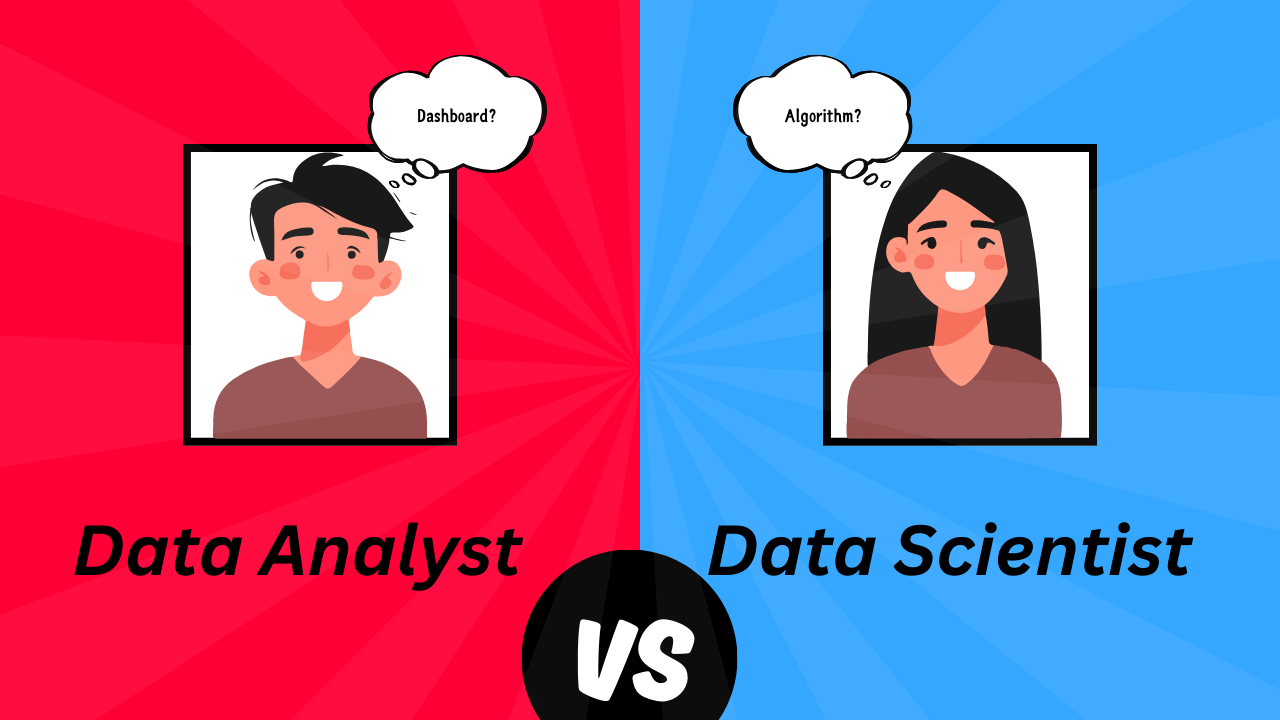An often asked and confusing question for many data students: What’s the difference between a Data Analyst and a Data Scientist? Which one should I choose? Are they the same? Jokes aside, despite the playful title and image, it’s not a competition. In most cases, a Data Scientist is considered a more advanced role, often requiring more education, certifications, or experience. Data Analysts typically work toward advancing into roles like Data Scientist or Data Engineer, or they may progress to senior positions within data analysis. Both are heroes in the world of data – read on to discover which superpower suits you best!
Breakdown
| Aspect | Data Analyst | Data Scientist |
|---|---|---|
| Main Focus | A Data Analyst primarily focuses on analyzing past data to identify trends, patterns, and insights that can help businesses make informed decisions. | A Data Scientist also analyzes data and on top of that builds predictive models, develops algorithms, and uses advanced techniques like machine learning and AI to predict future trends and solve complex problems. |
| Key Tasks | Data Analysts are responsible for collecting, cleaning, and processing data. They perform basic statistical analyses, create visualizations (like charts and dashboards), and provide actionable business recommendations. Example: A sales dataset for a retail store that contains columns like Date, Products, Sales Amount, Region, Units Sold. The data might be used to generate reports or answer specific business questions like “Which product had the highest sales in the past month?” | Data Scientists also collect and clean data, but they often deal with more complex datasets. Their responsibilities include developing predictive models, building machine learning algorithms, automating processes, and deriving deeper insights through AI and big data techniques. Example: A customer behavior dataset that includes structured data (such as Customer ID, Age, and Purchase History) alongside unstructured data (such as customer reviews or social media interactions) to build a predictive model for identifying the most effective sales strategies over the next four years. |
| Skills | Data Analysts need proficiency in tools like SQL for querying databases, Excel for spreadsheets, and Tableau or PowerBI for data visualization. They also need strong statistical analysis skills and the ability to present findings clearly. | Data Scientists require advanced skills in programming languages like Python and R. They also need to be proficient in machine learning algorithms, AI techniques, big data technologies (like Hadoop and Spark), and advanced statistical analysis. |
| Approx. Average Annual Salary | United States $80,113 United Kingdom £38,143 Canada $70,256 Australia $96,209 India ₹6,97,500 | United States $150,000 United Kingdom £58,143 Canada $96,333 Australia $115,691 India ₹12,57,736 |
Conclusion
If you’re looking for a more accessible entry point into data, a Data Analyst role could be the perfect starting place. It’s ideal for those who want to work closely with business teams, helping them make data-backed decisions. As you gain more experience, you can transition to more advanced roles like Data Scientist or Data Engineer.
However, if you love working with numbers, statistics, and solving complex problems, a career as a Data Scientist might be the better fit. This path typically requires deeper technical expertise, such as knowledge of machine learning, AI, and big data tools. It can be challenging, but the rewards are substantial in terms of both salary and career growth.
Ultimately, both roles offer exciting opportunities in the world of data.
